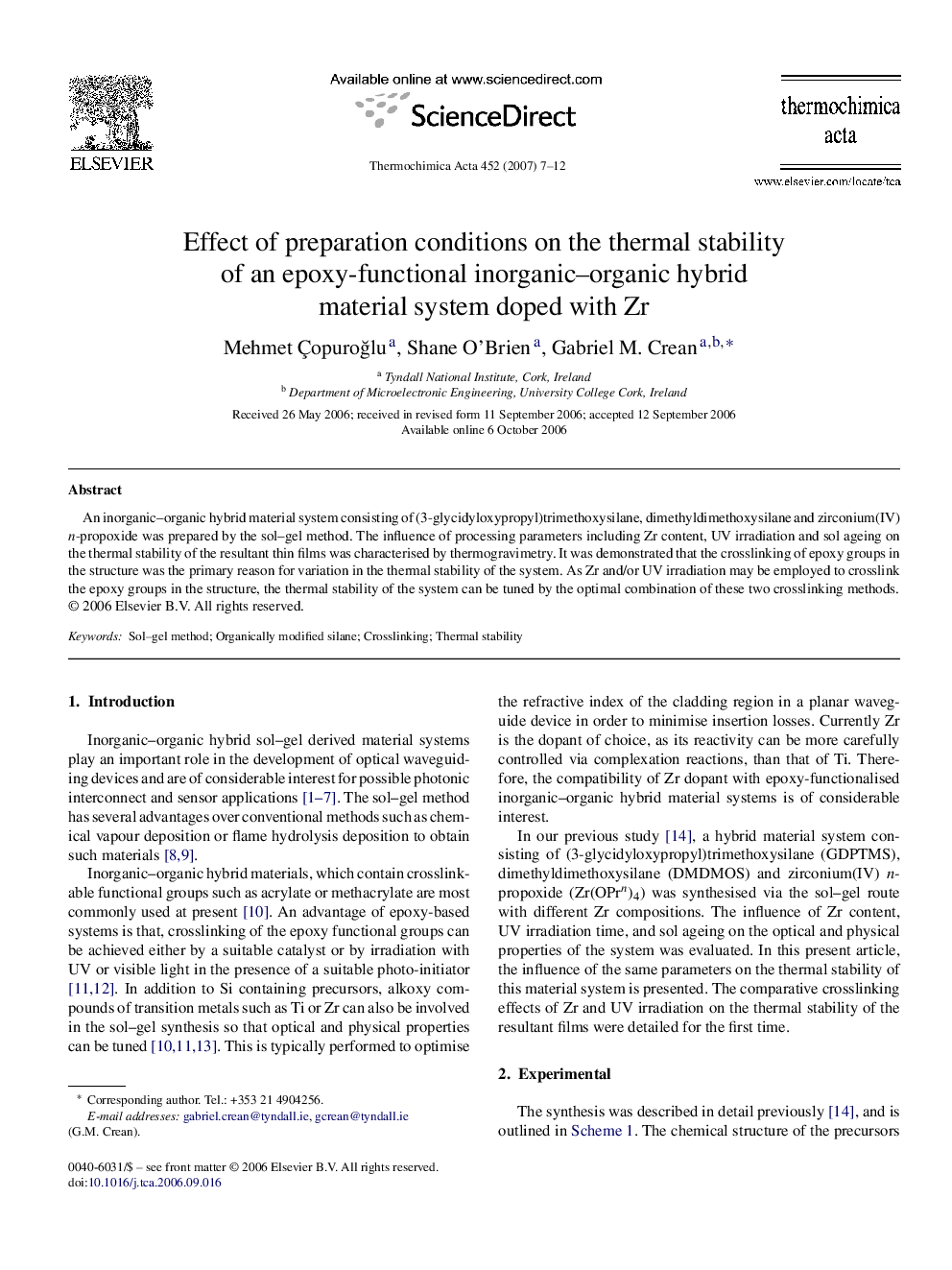| Article ID | Journal | Published Year | Pages | File Type |
|---|---|---|---|---|
| 675988 | Thermochimica Acta | 2007 | 6 Pages |
Abstract
An inorganic–organic hybrid material system consisting of (3-glycidyloxypropyl)trimethoxysilane, dimethyldimethoxysilane and zirconium(IV) n-propoxide was prepared by the sol–gel method. The influence of processing parameters including Zr content, UV irradiation and sol ageing on the thermal stability of the resultant thin films was characterised by thermogravimetry. It was demonstrated that the crosslinking of epoxy groups in the structure was the primary reason for variation in the thermal stability of the system. As Zr and/or UV irradiation may be employed to crosslink the epoxy groups in the structure, the thermal stability of the system can be tuned by the optimal combination of these two crosslinking methods.
Related Topics
Physical Sciences and Engineering
Chemical Engineering
Fluid Flow and Transfer Processes
Authors
Mehmet Çopuroğlu, Shane O’Brien, Gabriel M. Crean,
